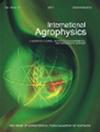施用石灰对集料侵蚀强度和堆积密度的影响
IF 1.7
4区 农林科学
Q2 AGRONOMY
引用次数: 0
摘要
**本研究由德国联邦环境基金会(Deutsche Bundesstiftung Umwelt DBU)资助,与柏林工业大学合作完成(项目编号33068/01和33068/02 - 2017-2021)。具有良好团聚和结构且团聚间强度高的土壤的地区有利于用作耕地,既能承受机械应力,又有利于植物的最佳生长。石灰以碳酸钙的形式施用,有利于形成稳定的土壤结构。因此,我们确定了石灰施用对Haplic Gleysol中粘土含量为45%的风干骨料的侵蚀强度和密度的影响。在田间以两种不同的速率施用石灰,可获得36 dt cao当量和54 dt cao当量。结果表明,石灰处理显著提高了骨料的抗冲强度。观察到较低的密度,这可能导致由于CaCO3的应用而改善了聚集体内孔隙和颗粒表面的可及性。此外,还测定了石灰样地和对照样地团聚层中C和N含量的差异。可对土壤侵蚀强度、耕地、石灰化、常规耕作进行控制本文章由计算机程序翻译,如有差异,请以英文原文为准。
Impact of lime application on erosive strength and bulk density of aggregates
*Corresponding author e-mail: t.frank@soils.uni-kiel.de **This work was carried out in cooperation with TU Berlin and financially supported by the German Federal Environmental Foundation (Deutsche Bundesstiftung Umwelt DBU) (project no 33068/01 and 33068/02 – 2017-2021). A b s t r a c t. An area with well-aggregated and structured soil with a high inter-aggregate strength is favourable for use as arable land, both to withstand mechanical stresses and for optimal plant growth. The application of lime in the form of CaCO3 can facilitate the formation of a stable soil structure. Therefore, we determined the impact of lime application on the erosive strength and density of air-dry aggregates sampled from a Haplic Gleysol with a clay content of 45%. The lime was applied to the soil in the field at two different rates, resulting in the following: 36 dt CaO-equivalents ha and 54 dt CaO-equivalents ha. The results show that liming significantly increased the erosive strength of aggregates. Lower densities were observed which presumably leads to an improved accessibility of the pores and the particle surfaces within the aggregates due to the application of CaCO3. Furthermore, differences between amounts of C and N were determined in the aggregate layers between the limed plots and the control plots. K e y w o r d s: erosive strength, arable land, liming, conventional tillage
求助全文
通过发布文献求助,成功后即可免费获取论文全文。
去求助
来源期刊

International Agrophysics
农林科学-农艺学
CiteScore
3.60
自引率
9.10%
发文量
27
审稿时长
3 months
期刊介绍:
The journal is focused on the soil-plant-atmosphere system. The journal publishes original research and review papers on any subject regarding soil, plant and atmosphere and the interface in between. Manuscripts on postharvest processing and quality of crops are also welcomed.
Particularly the journal is focused on the following areas:
implications of agricultural land use, soil management and climate change on production of biomass and renewable energy, soil structure, cycling of carbon, water, heat and nutrients, biota, greenhouse gases and environment,
soil-plant-atmosphere continuum and ways of its regulation to increase efficiency of water, energy and chemicals in agriculture,
postharvest management and processing of agricultural and horticultural products in relation to food quality and safety,
mathematical modeling of physical processes affecting environment quality, plant production and postharvest processing,
advances in sensors and communication devices to measure and collect information about physical conditions in agricultural and natural environments.
Papers accepted in the International Agrophysics should reveal substantial novelty and include thoughtful physical, biological and chemical interpretation and accurate description of the methods used.
All manuscripts are initially checked on topic suitability and linguistic quality.
 求助内容:
求助内容: 应助结果提醒方式:
应助结果提醒方式:


